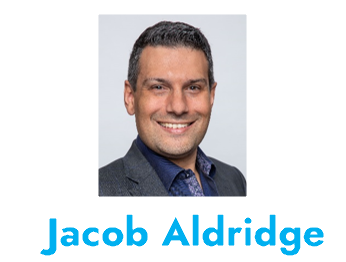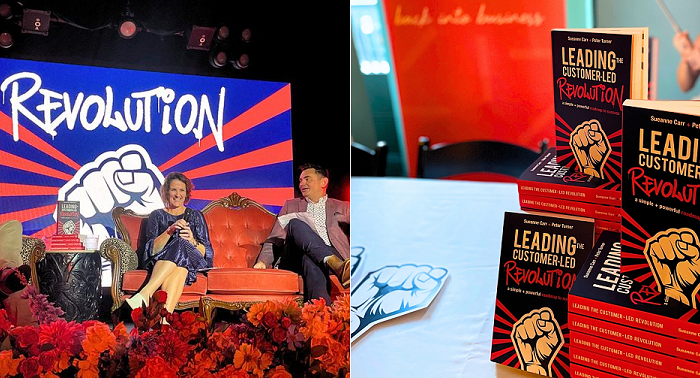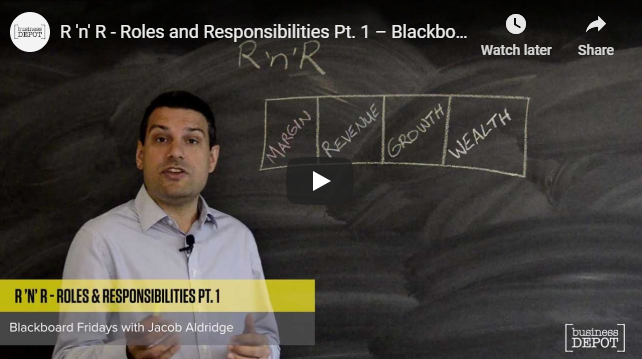Create a Crystal Ball for Your Business. In Blackboard Fridays Episode 84, Jacob talks about Customer Journey. Need this implemented into your business? Talk to the international business advisor who can do exactly that – Contact Jacob, Learn More, or Subscribe for Updates.
In every career, we have the chance to work alongside a handful of great people. I’m privileged to have worked with Peter Turner, and while the universe is too small and our genius too large for us to ever work for the same organisation again, it’s my great pleasure to let him share my Blackboard and introduce him to you.
Peter, and Sueanne his partner in life and in business who was encouraging and heckling him behind the scenes, founded Customer Frame last year to help Australian businesses improve their outcomes by viewing business through the lens of the customer.
It’s not just about Sales. It’s not just about Marketing, or Customer Service, though you’re allowed to improve those too. As Peter explains in this week’s episode, from your business vision down, understanding your customers for more will deliver you with a Crystal Ball.
Want to know the future for your business? Watch this week’s Blackboard Fridays here.
Who is Jacob Aldridge, Business Coach?
“The smart and quirky advisor who gets sh!t done in business.” Back independent since 2019.
Since April 2006, I’ve been an international business advisor providing bespoke solutions for privately-owned businesses with 12-96 employees.
At this stage you have proven your business model, but you’re struggling to turn aspirations into day-to-day reality. You are still responsible for all 28 areas of your business, but you don’t have the time or budget to hire 28 different experts.
You need 1 person you can trust who can show you how everything in your business is connected, and which areas to prioritise first.
That’s me.
Learn more here. Or Let’s chat.
Transcript
Hi. I’m Peter Turner, I’m the co-founder and partner at Customer Frame, we’re a customer strategy anti-consultancy. We help businesses close that gap between strategy and operation by putting the customer at the heart of everything they do.
Today, Jacob’s asked me to talk about one of my favorite topics. It’s how do you get a crystal ball for your business? We spend so long looking backwards, how do we look forwards and predict the future? Today I’d like to give our flavor of that from a customer’s perspective.
Let’s start with a known fact. Customers are the ultimate reason that we’re in business. At the end of the day, your now businesses, are you actually measuring your performance from their perspective? Do you actually track, from the customer’s view, how well you’re doing?
Unfortunately, the P&L just doesn’t cut it here. The P&L only looks backwards. Generally, interestingly, we always go to satisfaction first. It’s the go to of the naughty’s in the 90’s about how to measure our customer performance. Unfortunately, it’s pretty limited, it only measures a moment in time.
For example, I could be satisfied right now and in a minute from now my satisfaction can be completely the other way. I can be dissatisfied. Take an example, everyone’s seen it, you’ve seen it before, the five star rating. When you have that exit survey in the hotel, that exit survey, it’s too late. You’ve left, you’re gone.
In this day and age it hits TripAdvisor, it hits these social media reviews even before you can do anything about it. It’s too late, so imagine if you could predict the future performance of your business, using your customers as the input?
This is where we shift out of satisfaction and we head towards advocacy. Advocacy’s looking at the future propensity and the future intent of our customers. Are they likely to actually work with me in the future? The basic simple is if I can put my reputation on the line to go and tell others to use you, I’m pretty likely that I’m going to stay with you for the future and I probably won’t stray to your competitors.
Customers are complex beasts, this doesn’t have to be put in the too hard basket. Let me show you how. Every business has three types of customers. You have Assassins, you have Apathetics, and you have your Advocates. Let’s talk about these in a bit more detail.
Your advocates, starting at this side, knowing how many you got in these buckets is important.
With the Advocates, it’s about, these are the people that are out there actively talking about you. They’re waving the flag for you out in the field. At the barbecue on the weekends, they’re proactively telling everyone about you. It’s like having an extension of your sales force. This is an amazing asset to have in your business. The question I have for you now is, do you know how many you have? What proportion do you have?
Let’s move down the train a little bit to the Apathetics. These are the Apathetics that, they’re probably satisfied with what you’re doing and your business. They’re probably reasonably happy but unfortunately there’s nothing to take them out of that and step them up again to be able to go, I’m going to actively talk about you, I’m going to promote you, and move into that advocacy space, so we talk about these Apathetics being the general, the happy crowd, the people that are often missed in the process. I’ll talk a little bit later about why this is one of the most dangerous groups of your business today.
The third area, this is the one that people always get energetic about, are the Assassins. These are the people that are actively kneecapping you in the market place. They’re going out of their way to tell anyone and everyone who’ll listen about their experience with you and why you shouldn’t go and do work with that business. Be it a poor customer experience, being it poor service, a failed product, they tell the world quickly.
Obviously, at a pretty high level folks, you don’t want many of these in your business. So in customer strategy, we used to have this metric and I wanna blow this one away today a little bit. We used to talk about happy customers, you know, these advocates used to tell, on average, four people, about their great experience with your business, what we found also is that same research that the Assassins will go and tell 12 people so these will tell four but these will actually go and actively tell 12.
Now we’ve got this thing called social media, that you may have heard of it. A bit of phenomenon in modern business, well, with social media, take that four times and 12 times, it’s word of mouth on crack. I’m hoping by this point that I’ve actually convinced you a little bit that customers are kind of important to your business, they the ultimate reason to exist and we really need to understand how many we have in these three buckets.
They don’t fall outside of those three buckets for any organization or business. So let’s work this through, if I’ve got a high level of advocates, the reality is I probably have a business in six months time. I have a positive future.
Conversely, if I have a whole bunch of Assassins, your business probably won’t even be there by the end of this episode. But let’s remember back. I said about these Apathetics, that sort of hidden danger in the middle, the silent group, the unnoticed, their satisfied but they can switch in an instant. There’s nothing holding them there, the old satisfaction metric that you might even be running today in your business from the naughty’s in 90’s actually doesn’t help you here, we need to be able to move beyond that.
It’s no longer enough. We’ve got to think about what can we do around advocacy. This is where a customer strategy can really help your business, convert these people that are sitting in that middle, that apathetic group, and of course deal with each of these different areas but actually make these people link to you for life.
From our perceptive, customer strategy and the customer is boss in your business. It’s the ultimate reason that seriously, thinking about your business today, how many do you have in each of these buckets? Who are they? What do they need? These are the sorts of questions that you can get to quite quickly by changing and reframing your mindset away from looking backwards in your business using the crystal ball to look forward and actually measuring your customer performance, performance that is your performance from their perspective.
Today we’ve only scratched the surface on this topic. There’s much more to share with you, it’s a very simple, yet powerful way of thinking about our customer base in business. If you need some more help on these, please reach out. Come back through to BusinessDEPOT. Come to Customer Frame directly and we can help you get this Crystal Ball into your business and take you to the next level. Thanks for your time.
Next Steps
Want to learn more about how this can apply to your business? It costs nothing to chat:
- Email me jacob@jacobaldridge.com (I read them all)
- Call, Text, or WhatsApp me +61 427 151 181
- Or just Subscribe https://jacobaldridge.com/about/subscribe-to-jacob-aldridge-com/ to stay in touch




